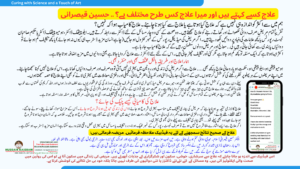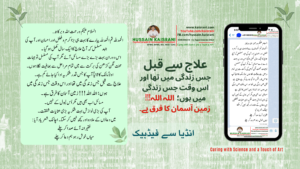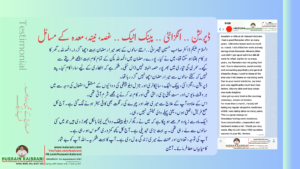Benzoicum Acidum
C6 H5 CO. OH.
Obtained, by sublimation, from Gum benzoin; or artificially from several aromatic hydrocarbons. Tincture or trituration.
The essential features
Benzoic acid is one of the main sycotic remedies and particularly concerns cases with an inherited sycosis from the parents. The main seat of weakness seems to be located in the kidneys, although the joints and the heart are also sensitive areas. Benzoic acid is equally valuable in cases where the patient develops kidney problems or rheumatic, arthritic or gouty manifestations soon after suppressed gonorrhea.
The great keynote for prescribing this remedy is strong smelling, highly colored urine, which occasionally has an appearance resembling brandy. The odor of the urine is strongly ammoniacal, or like that of a horse, and very pungent. It is said in our literature that this strong odor of urine is a constant concomitant to almost any Benzoic acid disease condition, whereas the very dark color of the urine is not always present. In my experience this is not always the case, as there are conditions under which the strong odor is not present and you may trace it only in the past history of the patient. Yet it is true that the main characteristic of this remedy is the strong odor of the urine. It is also said that the whole patient smells of urine, especially children with enuresis. But with the present sanitary possibilities that are available in our Western world, you will seldom trace this as a symptom.
Another keynote in this remedy is trembling in the left side of the lumbar region or in the loins.
Some conditions for which you may think of this remedy:
Fluctuation of symptoms according to the odor of the urine.
Due to an irregularity in the action of the kidneys, an increase in the pungency of the urine is accompanied by an amelioration of symptoms, and vice versa. The kidneys appear to function for a while, eliminating freely, in which case the urine is loaded with plenty of uric acid, full of deposits, dark in color, profuse and strong smelling; these conditions are accompanied by minimised symptoms and an increase in the patient’s comfort. At other times the kidneys seem not to be able to perform their eliminating processes and the urine is scanty or of light specific gravity, coming out like clear water. In such a case the complaints of the patient are almost always aggravated.
This is not always the case however. Symptoms may appear and be aggravated with scanty, suppressed, and at the same time highly odorous urine.
Benzoic acid should be considered as well as Medorrhinum in cases with a pre-history of suppressed gonorrhea, with complaints now mostly in the joints but with a tendency to affect the heart as well. In most of these cases where there is an aggravation from weather changes, from cold drafts and cold air, and amelioration from heat and warm covering, the usual prescription of Rhus tox. seldom does any good, and Medorrhinum also often fails. Benzoic acid should be thought of especially if the pains change place suddenly and constantly, from the extremities to the heart and vice-versa, while staying mainly about the heart. It is interesting to note here that the pains of Benzoic acid have a tendency to migrate in a peculiar way: arthritic pains in the joints may move to the muscles and appear as rheumatic ones, and vice versa. Pains in the right hand can later travel to the left arm down into the elbow and thence to the heart region; later they reappear in the right thigh and ankle. Pains in different parts of the body may alternate with heart symptoms. In some of these cases you will see that when the rheumatic pains in the extremities are really severe the pains in the heart are completely relieved. Pains in the heart often alternate with urinary symptoms.
The heart symptoms include intermittent heart beats, palpitation of heart with trembling, palpitation while sitting; worse after drinking; at night.
Awakens after midnight with violent palpitation and hard beating of temporal arteries. Slow pulse.
Benzoic acid may be useful in treating cases where there is a tendency to develop gout with high uric acid. Such cases may have the following symptoms: pains worse during the night in right great toe, gout moves from left to right. Gout and rheumatism, with swelling of joints, joints crack and feel dry. Rheumatic gout of the fingers, nodes are very painful. Gouty deposits in both wrists, between metacarpal bones. Swellings of the wrist, swelling of elbow joints. Swelling of the right knee, with pain as of ulceration of the whole leg, together with pains in the kidneys.
The symptoms tend to fluctuate according to the fluctuation of urine. All such cases have relief when the urine is copious and heavily loaded with deposits, but are full of pains if the urine is light in specific gravity.
Constitutions with a predisposition to develop kidney stones (lithaemic constitutions.) Benzoic acid should be considered for people who are careful with their diet yet develop stones in the kidneys all the time, accompanied by frequent kidney colics. There is frequent vomiting during the kidney colic which is usally left sided, but pains travel towards the right side as well.
As mentioned previously, the kidneys are affected in one way or another in this remedy. Renal insufficiency may occur, or chronic nephritis with dropsy and highly odorous urine, but more especially when the heart is also involved in which case the intensity of the heart symptoms alternates with the intensity of the kidney symptoms.
When the kidneys are chronically and seriously involved we see that the patient falls into a profound unrefreshing sleep. At other times he stays awake the whole night and is exhausted in the morning. In the period of wakefulness during the night, he dwells upon all the unpleasant subjects that he can think of. This state alternates with nights of stupid sleep for weeks. These fluctuations occur in accordance with the state of the kidneys. Further symptoms include puerperal albuminuria, uraemia and convulsions.
Another important symptom which so far has been totally neglected in this remedy is periodical asthma, especially in rheumatic persons. You will need to think of this remedy if the asthma appears after suppressed gonorrhea, where the kidneys seem to have been affected and do not function well. The asthma makes its appearance when the kidneys fail to eliminate properly and the urine is suppressed, scanty and strong smelling. Benzoic acid should also be considered in cases of: inflammation of bronchi and lungs, with great tenderness of chest, cough worse during night and lying on right side; long-continued, dry cough after suppressed gonorrhea.
Benzoic acid may be thought of in Reiter’s syndrome with primarily arthritic manifestations, urethritis and conjunctivitis.
Rectal fistula and hemorrhoids after suppressed gonorrhea where the fistula discharges constantly and the patient has to wear a cotton cloth to absorb it. The hemorrhoids are more pronounced on the right side, and are accompanied by obstinate constipation. There may be bleeding from the anus during stool, long lasting burning after stool and a sense of awful constriction of the anus, which may last for hours and keep the patient awake all night.
The Benzoic acid child is cross and irritable, much like the Chamomilla child. The child shrieks and kicks and only calms down if you carry him in your arms. He wants to be nursed in arms and will not be laid down.
This remedy is useful in nocturnal enuresis in children, where the whole room smells of the urine, and the sheets are stained brown. Alternatively there may be retention of urine in children, or diarrhea of children with watery, light, very offensive stools, resembling soapsuds, with strong-smelling urine. Shivering before stool may be a further symptom.
Menstrual difficulties, prolapsus of uterus, when accompanied by the characteristic smell of the urine, are symptoms that should make you think of Benzoic acid.
Dribbling of urine in old men with enlarged prostate, arthritic nodosities and strong smelling urine are further important symptoms.
Periodical headaches of rheumatic origin, alternating with or accompanied by rheumatic conditions and associated with a highly intensified odor of the urine. The head is worse from: emotions; exposure to a draught of air; uncovering of head; in morning on awaking; at rest; periodically better by warm applications and moving about.
Quinsy, diarrhea, etc., all when accompanied by the highly intensified odor of the urine.
Lastly, a feature of this remedy is the tendency to catch cold easily, especially if exposed to a cold draft on the head. Typically, the patient applies hot applications and the cold seems to go away. He is encouraged and goes out, and again the head is exposed to a draft and the cold returns. This process is repeated, as the patient applies the hot applications and goes out again, only to catch cold once again.
The Benzoic acid patient is a closed up individual who keeps all his problems, griefs and anxieties to himself. He will never allow his emotions freedom of expression, preferring to hide his grief or anger. Even a disagreement with others is kept hidden. This point serves to differentiate Benzoic acid from Natrum muriaticum or Nitric acid, remedies which have a lot in common. Natrum muriaticum or Nitric acid are incapable of hiding their feelings of disapproval as their facial expressions give such emotions away. The Benzoic acid personality is deeply timid and reserved, it does not allow the patient to clear up his emotions. There can be no open catharsis, no solution to be found in a fit of weeping when asking forgiveness for some deed. One could characterize such a personality by saying that the patient cannot “eliminate the rubbish” from his emotions. An analogy can be made here with the inability of the kidneys to eliminate useless matter; the rubbish stays inside the organism and creates uric acid, kidney stones, headaches and disease in general. So difficult is it for the patient to eliminate in any way that perspiration causes him to be overwhelmed with anxiety.
The useless matter retained in the organism concentrates in the kidneys and forms stones and excess uric acid. The arthrosis are affected and deformities in the extremities appear. You may find bunions, gouty concretions, nodes on joints, swellings of the knees, gouty deposits on the wrists etc. Stimulation of the emotions may bring about headaches, pains in the heart or in the joints, kidney colics or an aggravated asthma attack. The emotions are not expressed as they are really felt, and this suppression may eventually create deformations in the organism.
A peculiarity of Benzoic acid is a strong fear of becoming deformed or of seeing any deformed person. The thought of deformity, or the sight of a deformed person causes the patient to shudder. He cannot stand the idea that one day he may be deformed himself, it is beyond his endurance. Yet this remedy produces deformations like Ammonium phosph., Calcarea caustica, Calcarea fluorata, Lycopodium and Kali carbonicum.
In general this remedy is inclined to dwell on unpleasant things much like Natrum muriaticum. The patient may lie awake the whole night, letting his mind revolve around things that bring on sadness, causing a kind of hysteria. When thinking of disagreeable things, particularly of ill health or the possibility of becoming deformed, he cannot control his emotions and a momentary physical chill or nervous shuddering may go through his body. The mind is in a state of confusion; once the patient gets hold of an idea he cannot be rid of it. He is forgetful of words while speaking, makes mistakes in writing and omits words. Sadness and depression may supervene, especially with headaches. The sadness sets in when thinking of possible illness, such as a brain tumor. The patient then loses his desire to live and experiences loathing of life. A vicious circle sets in: when the emotions are excited a headache is likely to develop, and with the headache the patient becomes depressed.
Generalities
Benzoic acid is a chilly medicine, the symptoms are worse in open air, from changes of weather, from cold drafts and cold air, worse by uncovering and better by heat and warm covering of the head.
Many of the symptoms are aggravated by walking in open air or uncovering head: throbbing in eyeballs becomes worse; confused sounds of voices in ear are aggravated, gastric symptoms become worse, etc.
Motion in general aggravates most of the symptoms, but headache is worse at rest, and toothache is worse lying down.
Turning in bed makes the symptoms worse.
Most of the symptoms appear on the left side, but may subsequently go to the right. Pains suddenly change their locality.
Patient gives out a very strong urinous odor.
Trembling: with palpitation of heart; in loins.
Weariness, lassitude; extreme weakness.
Head and asthmatic symptoms return periodically.
Head
Symptoms in the head bring on anxiety, depression, lassitude and loss of appetite.
While sitting, pressure on whole lower part of head and whole spine, as if they were pressed like an elastic body, so that he stretched himself involuntarily and bent forward.
Fearful pain in occiput or cerebellum, which had confined the young man to bed for three weeks. Pressure on vertex extending to spine, with anxiety.
Hammering pain in temples, has to lie down.
Cold feeling in head.
Shaking in head.
Rheumatic pains in head.
Formication in forehead.
Cold sweat on head.
Headaches worse at rest, better moving about.
Eyes
Burning heat in eyes and lids.
Throbbing in eyeballs; becomes worse while walking in open air.
Worse reading by artificial light; walking in open air.
Distress in eyes, as from want of sleep.
Irritates conjunctiva, causes pressive feeling in bulbus.
Ears
Sensation in ears like a sound of confused voices, most when swallowing or walking in open air.
Throbbing and hissing in ears synchronous with beats of heart.
Swelling behind ears, which seems to reach to periosteum.
Nose
Frequent attacks of profuse epistaxis from left nostril, blood thick, dark.
Seems to smell dust, cabbage, or something stinking.
Sense of smell diminished.
Pain in nasal bones.
Pressure on root of nose.
Epistaxis.
A cold in head readily occurs from exposure to cold, and is renewed every day.
Sensitiveness of nose.
Redness in corners of nose.
Face
Sense of pressure, as if face had gone to sleep.
Tension in one side of face.
Numb feeling in face.
Burning heat of face or of one side.
Symptoms better by external heat, by pressure, or friction.
Cold sweat on face.
Circumscribed redness on cheeks.
Copper-colored spots on face.
Face red, with little blisters.
Trembling of lips.
Involuntary biting of lower lip at dinner.
Itching on chin.
Mouth
Glossitis. Gouty inflammation of tongue.
Tongue spongy on surface with deep cracks and spreading ulcers. Extensive ulcerations of tongue, with deeply chapped or fungoid surfaces. Tongue of a slight bluish color.
Velvety coating on tongue, with high-colored, strong smelling urine.
Tongue coated with white mucus.
Soreness of back part of tongue, felt most while swallowing.
Taste: of blood; bitter; food tastes salty; bread smoky; after taste of food.
An ulcerated tumor on left side of mouth, upon soft commissure of jaws, behind last molar. Slightly acid mucus.
Heat around mouth.
Throat
Peritonsillar abscesses.
Sensation of lump (as of food) in pit of throat; of swelling and constriction.
Swallowing difficult, incomplete; with noise in ears; with soreness on back of tongue.
Sensation of swelling, or of constriction of throat.
Mouth and throat symptoms relieved by eating.
Heat in esophagus, as from acid eructations.
Tonsillitis with characteristic high-colored, strong urine.
Collection of mucus in throat.
Thyroid gland feels swollen.
Stomach
Appetite in evening; lost in morning.
Thirst with sleepiness; evening.
Sweat while eating.
Loathing sickness at stomach, pain and discomfort; with gagging.
Vomiting: of a salty substance; bitter.
Weak digestion.
Gastric symptoms increased when walking, especially ascending.
Sensation, as of a lump in pit of throat, as if some food had lodged there. Sensation of heat in stomach.
Abdomen
In region of liver constant fine stitching midway in upper portion thereof, not increased by pressure. Ascending stairs makes the gastric symptoms worse. Pain below left short ribs.
Heat through abdomen.
Cutting about navel; relieved by stool.
Pressure of clothing makes him feel wearied.
Tearing bellyache.
Tensive pains in loins and groins.
Rectum
Diarrhea in afternoon, 5-7 p.m.
Watery clear stool.
Frothy stool.
Stitching in rectum.
Urging to stool, with ineffectual straining.
Sensation of constriction at lower end of rectum.
Horripilations, or chilliness before stool.
Stools: copious, watery, greyish-white, like dirty soapsuds; excessively offensive, scenting whole house; of a strong pungent smell, like that of urine; putrid, bloody; frothy; insufficient.
White, stinking, liquid stools.
Diarrhea of children, discharge copious, watery, clear-colored, very fetid; profuse, watery, running through diaper.
Watery, light-colored, very offensive stools (in children) with unusually strong-smelling urine.
Fetid, watery, white stools, very copious and exhausting, in infants, urine being of a deep red color.
Formication at anus.
Slightly elevated, wartlike, round surfaces around anus.
Urinary organs
The odor and the color of the urine is of the greatest importance in this remedy.
Odor like horse’s urine. Renders urine acid; excess of hippuric acid.
Urine dark, urinous odor highly intensified.
Dark, or highly colored, offensive urine, after suppressed syphilis or gonorrhea.
The urinary odor is very strongly ammoniacal.
Urine dark brown, of a putrid cadavarous smell.
Odor aromatic, changeable.
Brown urine, smells sour, scalding in passing.
Urine diminished; thick; bloody.
Fetid urine, with prolapsus uteri.
Urine of a very repulsive odor, of a changeable color, brownish, cloudy, of an alkaline reaction; effervescing with hydrochloric acid; white, flocculent sediment in the urine immediately after its passage, consisting of the phosphate and carbonate of lime, without uric acid; pale, languid; weak loins. Alkaline urine.
Color of urine brown, like beer; reddish-brown.
A granular kind of mucus mixed with phosphate in sediment; urine dark, reddish-brown; acid reaction. Urine with concretions of urate of ammonia.
Enlargement of prostate gland – senile.
Dysuria in the morning in old men.
Acrid, fetid discharge from urethra.
Pain in urethra when not urinating.
Kidney colics
Sore pain in back; burning in left kidney, with drawing when stooping; dull pain in kidneys, loins stiff; right knee swollen. Kidney pains, which penetrate chest on taking a deep breath.
Pain in kidneys when breathing deeply.
Drawing in left ureter when stooping.
Cystitis, with extremely offensive odor. Fleeting pains in bladder, not when urinating, but at other times.
Too frequent desire to evacuate bladder, urine normal.
Sensibility of bladder with muco-purulent discharge.
Hot, scalding urine, deep red, of strong odor, causing so much suffering in its passage that this was performed but once a day. Irritability of bladder: muco-purulent discharges. Pains in bladder.
Dysuria senilis, when the gravel is trifling and the irritable state of bladder and pains are induced by other causes.
Valuable especially for catarrh of the bladder, with offensive brown urine.
Enuresis nocturna of children up to age 16 if the urine is strongly smelling.
Genitalia – male
Pain in genitals; pressure; raw pain; splitting pains.
Gleet; urine offensive.
Gonorrhea suppressed (by copaiva) with offensive urine.
Smarting of fraenum praeputii.
Itching in sulcus, behind corona glandis.
A thrilling, almost painful sensation left side of glans, ending in a sensation of tickling and itching.
Genitalia – female
Menstruation too early or retarded.
Weakness after menses.
Amenorrhea.
Prolapsus uteri with fetid urine.
Gastric derangements when ascending a height.
Retention of urine with infants.
Lochia last too long.
Chest
This remedy should be thought of in cases of heart conditions that have arisen after suppressed arthritic manifestations, and more so if there is a history of suppressed gonorrhea. Gouty heart. Gout, or rheumatism, affecting heart.
Pain in heart alternating with rheumatism of the extremities. Tearing rheumatic pains in extremities, relieving heart. Pains change place incessantly, but are most constant about the heart.
Intermittent beats of heart.
Palpitation of heart, with trembling.
Palpitation while sitting; worse after drinking; worse at night.
Awakens after midnight with violent palpitation and hard beating of temporal arteries.
Awakens with oppression of breathing; with palpitation of heart (after midnight); with heat and hard pulse. He wakes every morning about 2 o’clock from strong internal heat, and a hard, bounding pulse.
Inflammation of the lungs.
Slight hoarseness in morning; sneezing.
Difficulty of breathing on awaking.
Asthma alternating with inflammatory rheumatic complaints or with kidney problems. Periodic attacks of asthma. Oppression of lungs because of excess collection of mucus.
Cough: after a slight cold.
Dry, constant, hacking cough.
Dry, tormenting cough with great weakness; sweat. Last stages of pneumonia.
Cough followed by expectoration of green mucus.
Copious secretion of mucus.
Painful trembling in chest.
Morbid agitation and restlessness in chest.
Pressure on ribs.
Sensation in chest of swelling; of roughness.
Pains often change their place suddenly, causing a dry cough and asthma. Stitching in right side of chest.
Asthenic pneumonia of a young man; after strength had sunk daily; difficulty of breathing increased every hour to a fearful degree. Great weakness and difficult breathing, increasing every hour.
Back
Stiffness of neck only on one side.
Pressure in nape of neck.
Violent itching in nape of neck.
Deep penetrating pain in posterior part of left side, at about sixth rib. Pain right side of back between tenth dorsal vertebra and side Dull pain in region of kidneys; stiffness in loins.
Trembling in lumbar region.
Myelitis.
Sense of coldness at sacrum.
Extremities
Arthritic nodosities in wrists, hands, finger joints. In both wrists, between metarcarpal bones, abundant gouty deposits with swelling of elbow joints. Tearing pain in third and fourth finger joints.
Fingers swollen; tearing and fine stitching pains in various parts of limbs. Sensation of swelling under axillae.
Paralytic pain of fingers.
Eruption of red spots on fingers.
Itching in palm of right hand.
Cracking in joints of lower limbs, sense of dryness in knee joints with cracking when moving.
Swelling of the right knee, with pain as of ulceration of the whole leg, with pains in the kidneys. Gouty knee.
Tearing and stitching pains, especially in the metatarsal joint of the right great toe. Tearing pain in gouty toes.
Pains are changing location all the time. Pain in left hip, knee and toes; thence into muscles of calf and then in knee; after it has left these parts it appears in right thigh and ankle. Pain in right knee first then in left.
Tearing pain in anterior surface of thigh.
Drawing pain in knees after drinking wine.
During night gout commences in right great toe. Swelling in first right toe.
Stitch passing upward through right great toe, followed by burning, which increases the stitch; afterwards it appears in left great toe, from which it vanishes with a thrill.
Pain in toes at night, joints gouty, stitching pain.
Pain in large joints of big toe, with tumefaction and redness.
Swelling in gouty right knee.
Lassitude in lower limbs.
Sensation as if lower limbs were tightly bandaged.
Discoloration of toes, then redness.
Panaritium.
Numbness in toes.
Sleep
Periods of wakefulness, alternating with periods of deep stupid sleep from which wakes up unrefreshed. Palpitation from sleeplessness.
Heat on waking.
Sleepiness, with dulness of head.
Awakens with difficulty of breathing; with palpitation.
Starting up from sleep.
Pulsation of temporal arteries from falling asleep.
He wakes every morning about two o’clock, from strong internal heat and a hard, bounding, but not quickened pulse.
Fever
Cold hands, feet, back, knees, as from cold wind.
Coldness with feeling of heat.
Sense of heat in esophagus; stomach; belly.
Heat: with sweat; with cold in head; with nightly palpitation.
Awakens every morning at 2 o’clock with violent internal heat, and hard, beating pulse, compelling him to lie on back, because beating of temporal arteries causes a humming in ears, and prevents him from going to sleep.
Skin
Sweat: while eating; while walking; morning in bed, especially in face; with anxiety. Cold sweat: on head; on face; on feet.
Sweat with itching; with aromatic odor.
Skin pale, cool, with sweat, weakness, coma.
Itching on various parts, yielding a rather agreeable sensation on being scratched, but leaving a burning.
Sweat with itching.
Syphilitic spots and marks.
Ulcers.
Slightly elevated round surfaces of a wartlike appearance.
Clinical
Gout. Deformative arthritis. Rheumatism. Kidney affections. Urine disorders. Bladder affections. Asthma. Enuresis of children. Tumors of eye. Gonorrhea. Sycosis. Ulcers.
Relations
Incompatible: wine, which aggravates pains in kidneys, knees, etc.
Compare: Copaiva, Fer., Natr-m. Nit-ac. (urine smelling like horse urine); Fluor-ac., Med., Rhus t.
Dosage
From 6x to the highest.





